About us
History of VFN
The Prague General University Hospital, based on Charles Square, owes its birth to Emperor Joseph II. His majesty soon after his ascension to the throne - in 1781 - issued so-called directive rules in which health institutions were to be built. General hospitals were to care for the poor, in nursing homes they had to give birth to poor women. The hospital was also supposed to be found, orphanages, sickness for the poor, chronically ill patients, and madhouse.
First the hospital was opened in Vienna, then in Brno and Olomouc. The opening of the hospital in Prague struggled with financial and legal problems connected with the creation of a unified endowment fund from abolished monasteries, unsatisfactory hospitals, poorhouses and others. These funds were supposed to cover the hospital's operation. Specific negotiations on the establishment of health institutes started in 1785in which the highest health officer in the Czech Republic, protomedicist T. Bayer and builder FL Herget, professor and director of the Prague Polytechnic, played an important role.
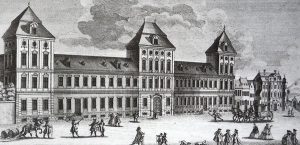 |
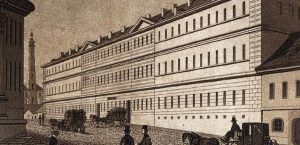 |
The original proposals included the placement of the hospital in the monastery and prelature on Karlov, the maternity hospital in the capitular house of St. Apolliner, madhouse and sickness to the former monastery of Sts. Kateřiny. However, there was little water on Charles, so other solutions were sought. In 1786, Herget and Bayer designed the constitutions to be built in today's US. Republic. The hospital was supposed to be in the premises of the Strahov Premonstratensians near Sts. Benedict, maternity hospital and madhouse in the former Capuchin Monastery at St. Josefa.
Emperor Joseph II intervened after arduous negotiations and looking for space to build a hospital. In October 1786 he visited Prague. He pointed out the little-used building of the New Town Institute of Noblewomen at St. Angels at the then Cattle Market (today's Charles Square). At the end of 1786 and beginning of 1787, the location of the hospital began to be considered, and in April 1787, Herget submitted reconstruction projects. On September 18, 1788, a paper with instructions for the organization of poor health care was sent from Vienna. The material counted on the location of the hospital and the madhouse at the Cattle Market. The memorandum also contained requirements for modifications to the Institute of Noblewomen for Health Care. Reconstruction started in 1789. The reconstruction of the hospital was costly. Soon after the opening, a series of renovations and extensions were launched, which is still in progress. In addition, neighboring buildings were gradually purchased.
Since the mid-1970s there were proposals to build a hospital pavilions. However, the plan was only partially implemented. In the interwar period, many new ones were not built, the most necessary repairs were carried out. The problematic development of the hospital was accompanied by the same complex administrative development. The hospital was founded as a foundation institute, built under the direct supervision of the highest provincial office - the Czech gubernia. This state lasted until the Protectorate. At the turn of 1942-1943, the hospital fund was canceled and divided. The Czech part of the hospital was declared a German state institute and was subordinate to the Reich Protector Office. In 1946 the fund was restored and until the end of 1948 the hospital was a funded institution. In January 1949 the hospital was nationalized and in 1953 it was divided into a teaching hospital of the 1st and 2nd centuries. The first was the KNV Prague, the second was the ÚVV.
Also worth mentioning is the original idea of how patients should serve the hospital. It was supposed to provide care to patients regardless of their condition, religion or nationality. The exception was patients suffering from an incurable disease. The nurses cared for them. Unpaid Praguers were entitled to free health care. However, they had to live in Prague for at least 10 years and submit a certificate of poverty. Paying patients were treated in the 1st and 2nd class rooms, with Prague citizens having lower taxes. This advantage was canceled only in 1928. Classes were abolished in 1948.
A few months after the hospital was opened in the clinic. Until then, there was a clinical teaching of the medical students at the Hospital of the Merciful Brothers, but only men could be hospitalized. The "medical school" was divided into internal and surgical. Professors stood at the head of the clinics, each with an assistant. They were paid from the study fund and their authority was limited to clinical rooms. In 1811, the positions of professors and chiefs were merged.
Outside clinics, ambulances began to emerge. However, their existence caused disputes between the Study and Hospital Funds about their legal status and funding. In the interwar period, specialized clinics were also established within some clinics. For example, sports and gym counseling, diabetes, cardiology, tuberculosis, occupational diseases and more. The position of counseling centers and their financing was problematic.
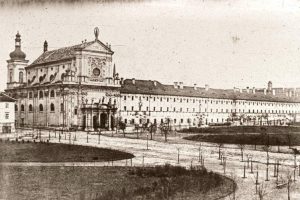 |
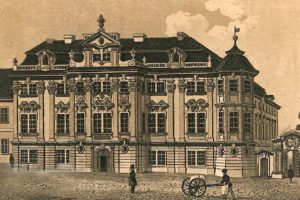 |
Since the early 1960s there was a match for the Czech university. In addition to JE Purkyně, internist B. Eiselt, surgeon V. Weiss and obstetrician and gynecologist J. Streng played an important role in this period. In 1882 a law on the division of the university into Czech and German was issued. The Faculty of Medicine started its activities in the school year 1883/4. It was almost 10 years later, in 1892, that the Czech faculty had the same clinics as the German clinic with the exception of the propedeutic clinic. There were 7 Czech and 8 German clinics and they existed until the closing of Czech universities on 17 November 1939.
The Prague General Hospital was also the cradle of our nursing. The first nurses and nurses came from the poorest sections of the population. The reason was simple - the hospital service was strenuous and underpaid. The service level matched that. Since 1844, only women have worked in the hospital as nurses. The Czech and German nursing schools were opened in the hospital in 1916.
History of the Faculty Clinic
It is a functionalist building of a health center and a former boarding school of a health school. The building complex has a facade both to Karlovo náměstí (the original dormitory of a medical school) and to Malá Štěpánská street. In 1937 the original development was demolished. The plans for the nursing school were made by architect F. Fencl and made by the architect V. Kerhart for the Czech polyclinic (court wings). The plans were modified during the war (1941), in the years 1946–1947 a final version was submitted on the basis of which the building was permitted in December 1948. In 1955 the final building approval was completed and the construction of the whole polyclinic was approved in the same year according to the finally modified and supplemented plans from February 1954. 1960 to 2002 Reconstruction and changes were carried out in both buildings. Further adjustments to the health center in the sense of modernization and construction of new outpatient workplaces are ongoing, depending on the availability of funds. At present, there are ambulatory, resp. diagnostic and therapeutic workplaces of individual clinics and other specialized VFN departments (eg Center of Preventive Cardiology of the 3rd Internal Clinic, Tobacco Dependency Treatment Center, Center for Treatment of Demyelinating Diseases of the Department of Neurology, Central Departments of the Institute of Physiotherapy, KIA laboratories, day care centers, etc.). The Faculty University Hospital is designated as the Faculty Hospital pavilion C, the original boarding school of health school is designated as part of C2, the court wings as part of C1.
Present
Dozens of prominent figures in our medicine and health care have worked in the hospital, which is on the threshold of its third century of existence and where it has suffered numerous shortcomings. They have achieved and achieved impressive results in both treatment and scientific work. A number of priority surgical and treatment interventions have been carried out at the hospital, which have achieved international recognition similar to those made in confined laboratories. All this gives the hospital a unique and inspiring atmosphere. At the same time, it commits the next generation of efforts and efforts to cope with its famous predecessors.
 |
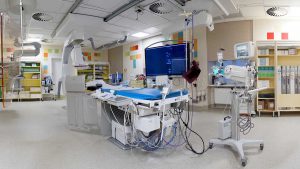 |
Hana Kratochvílová
The text used materials from the historian Ludmila Hlaváčková from the Institute of History of Medicine of the First Faculty of Medicine
